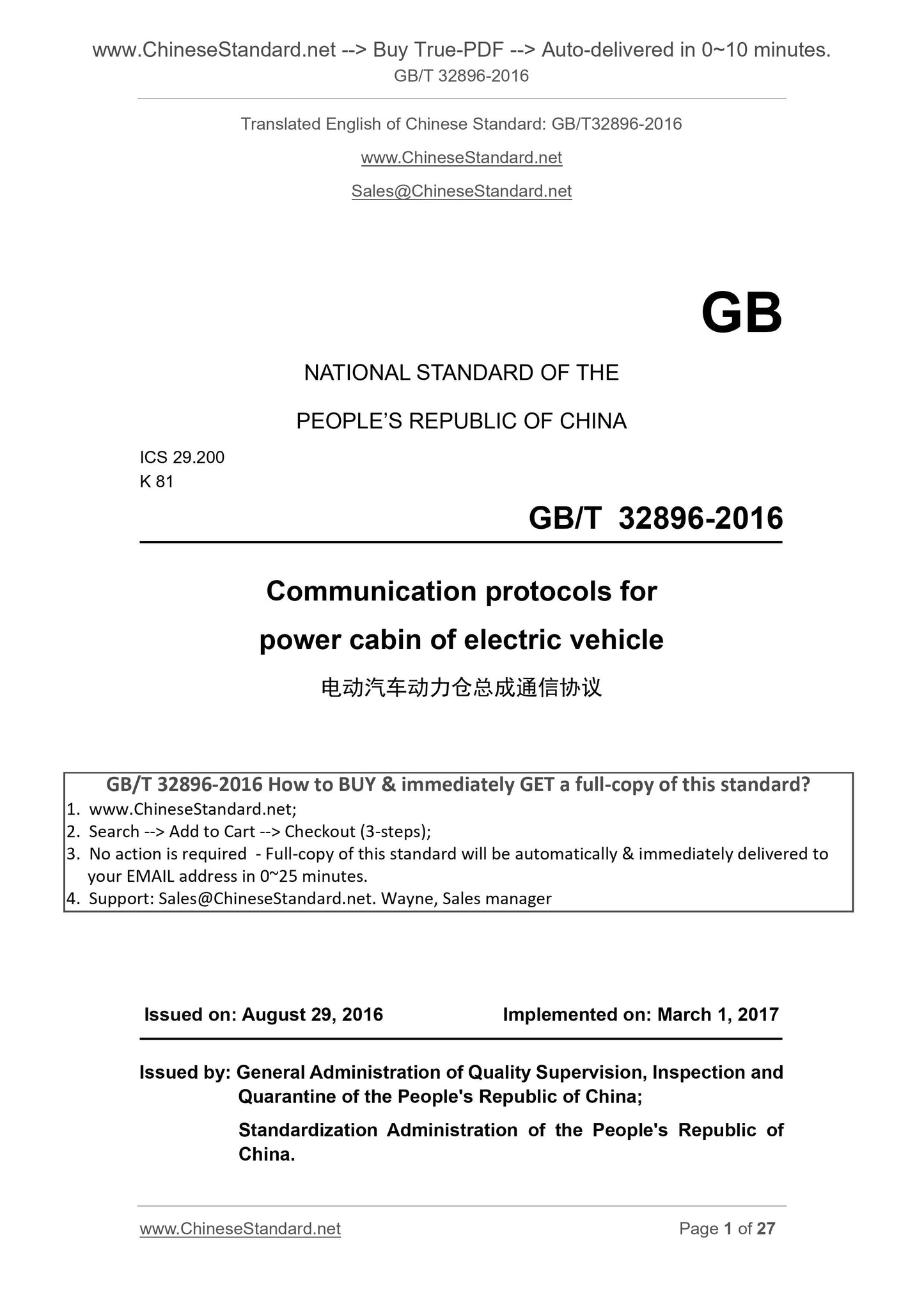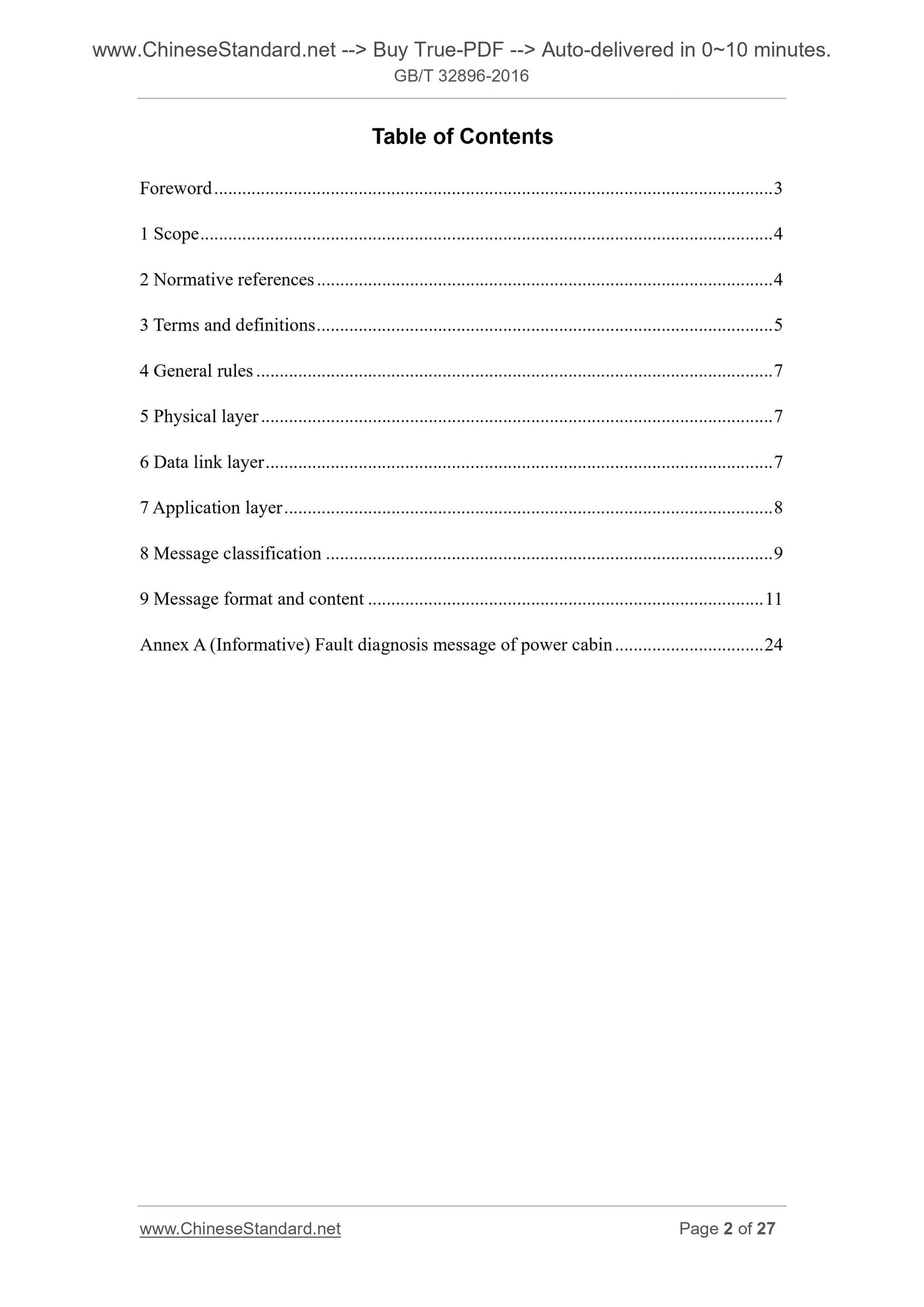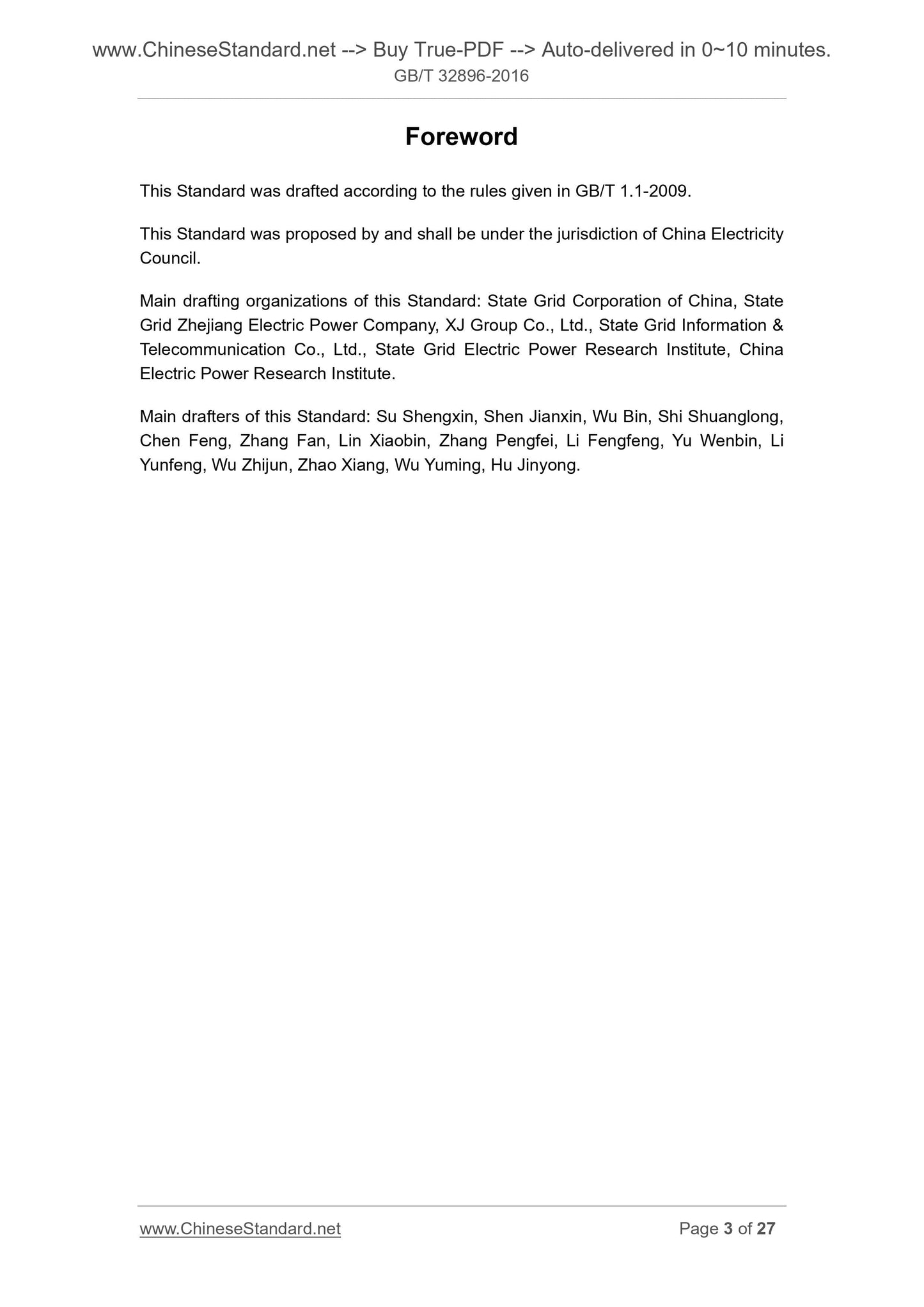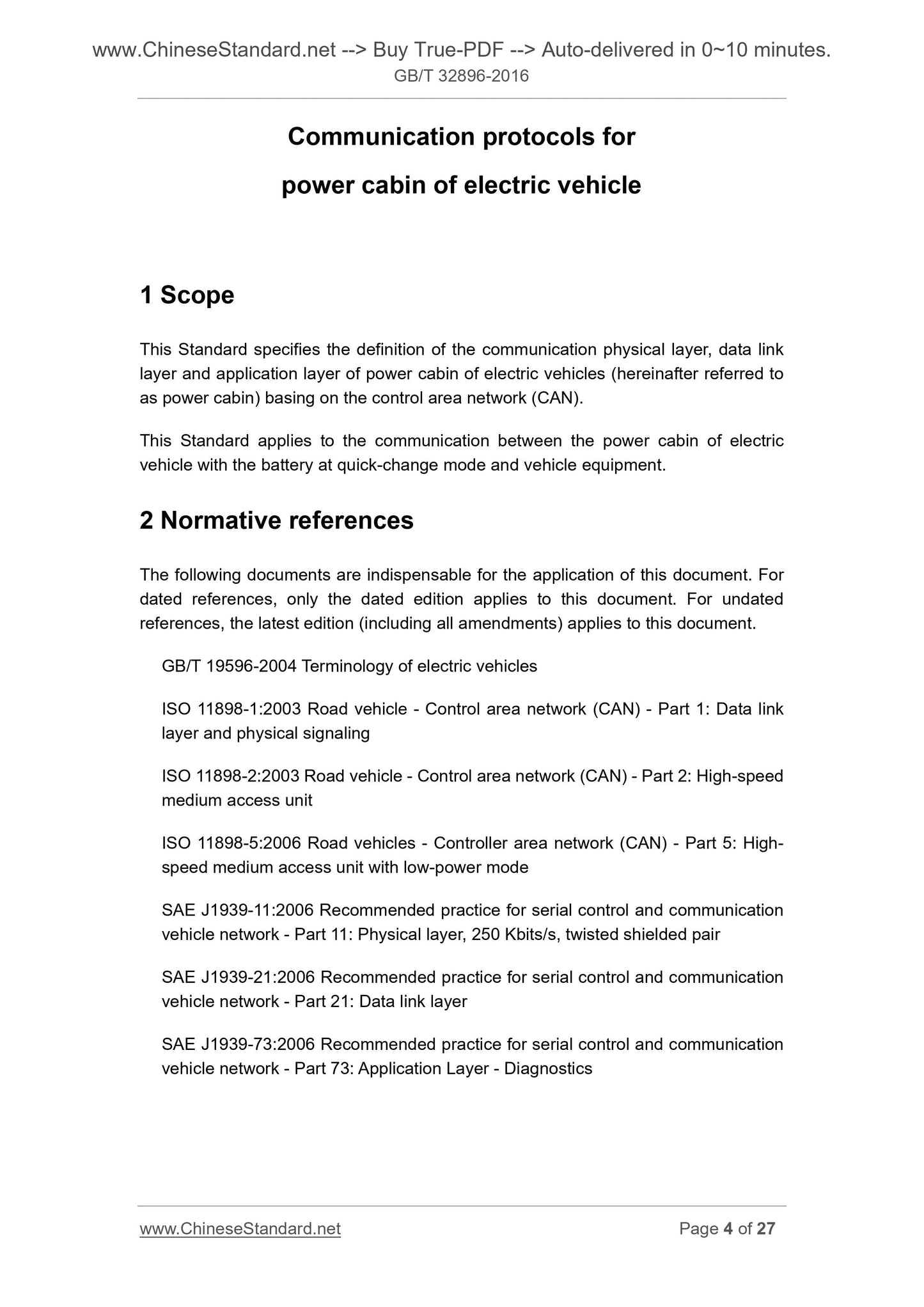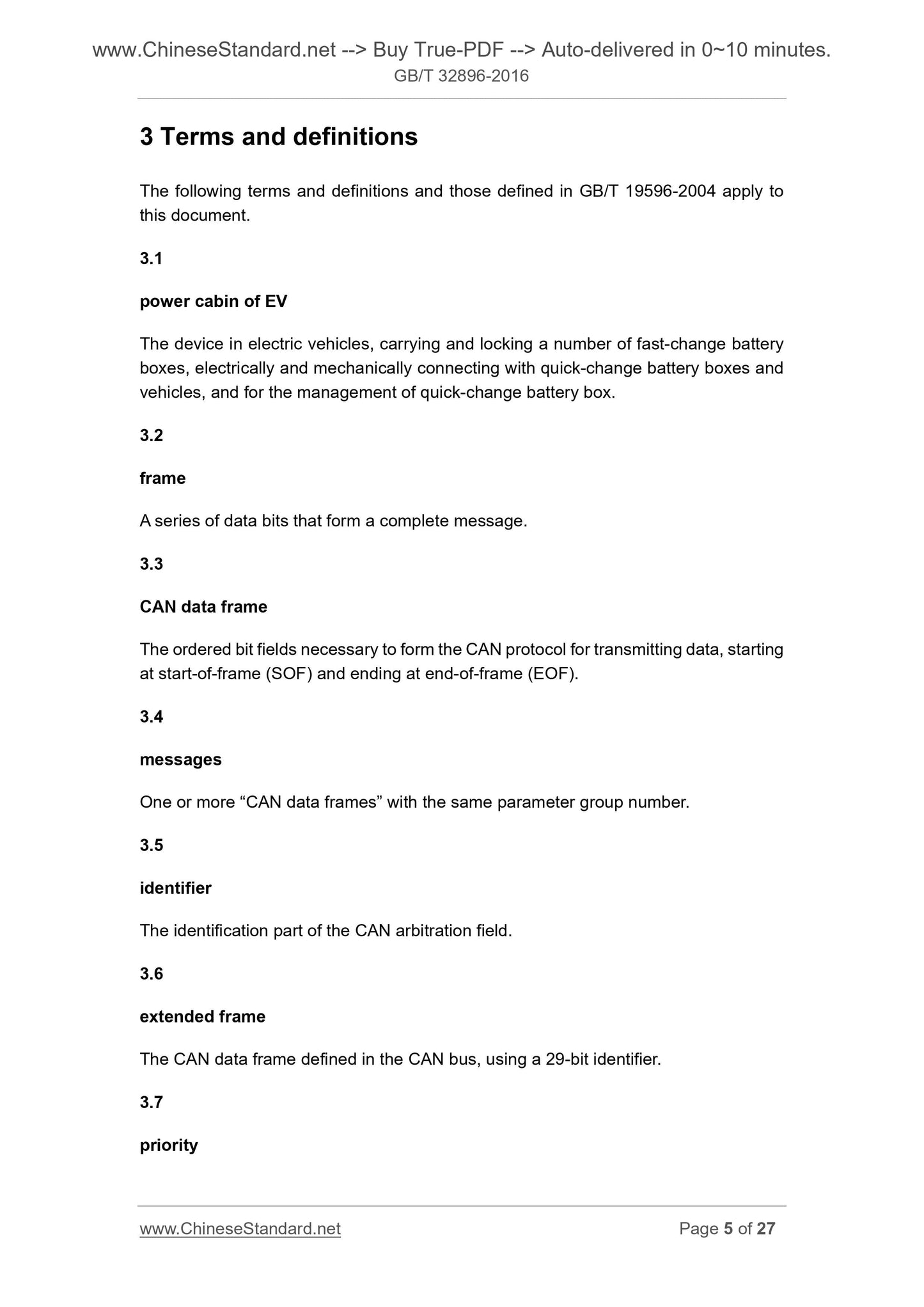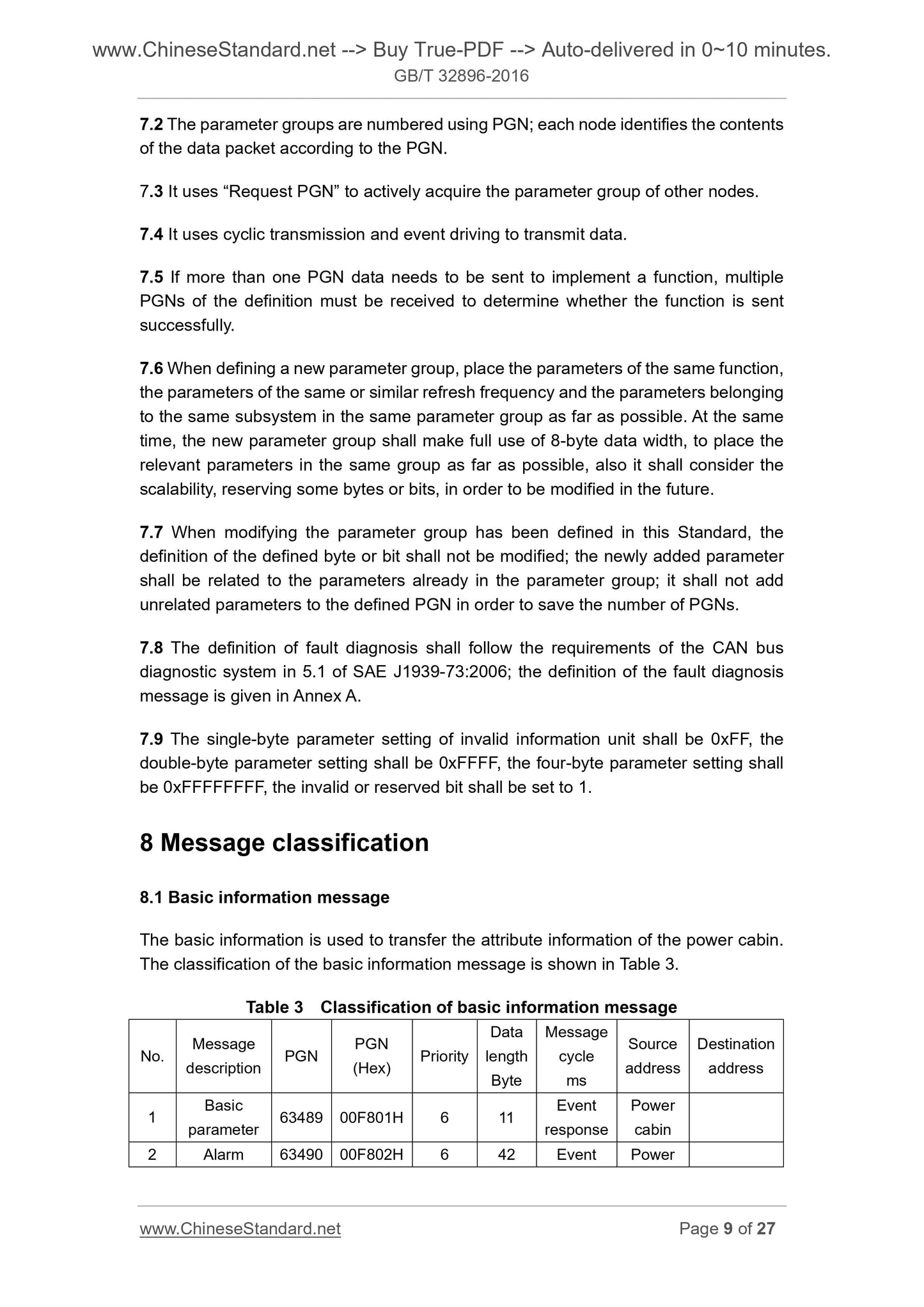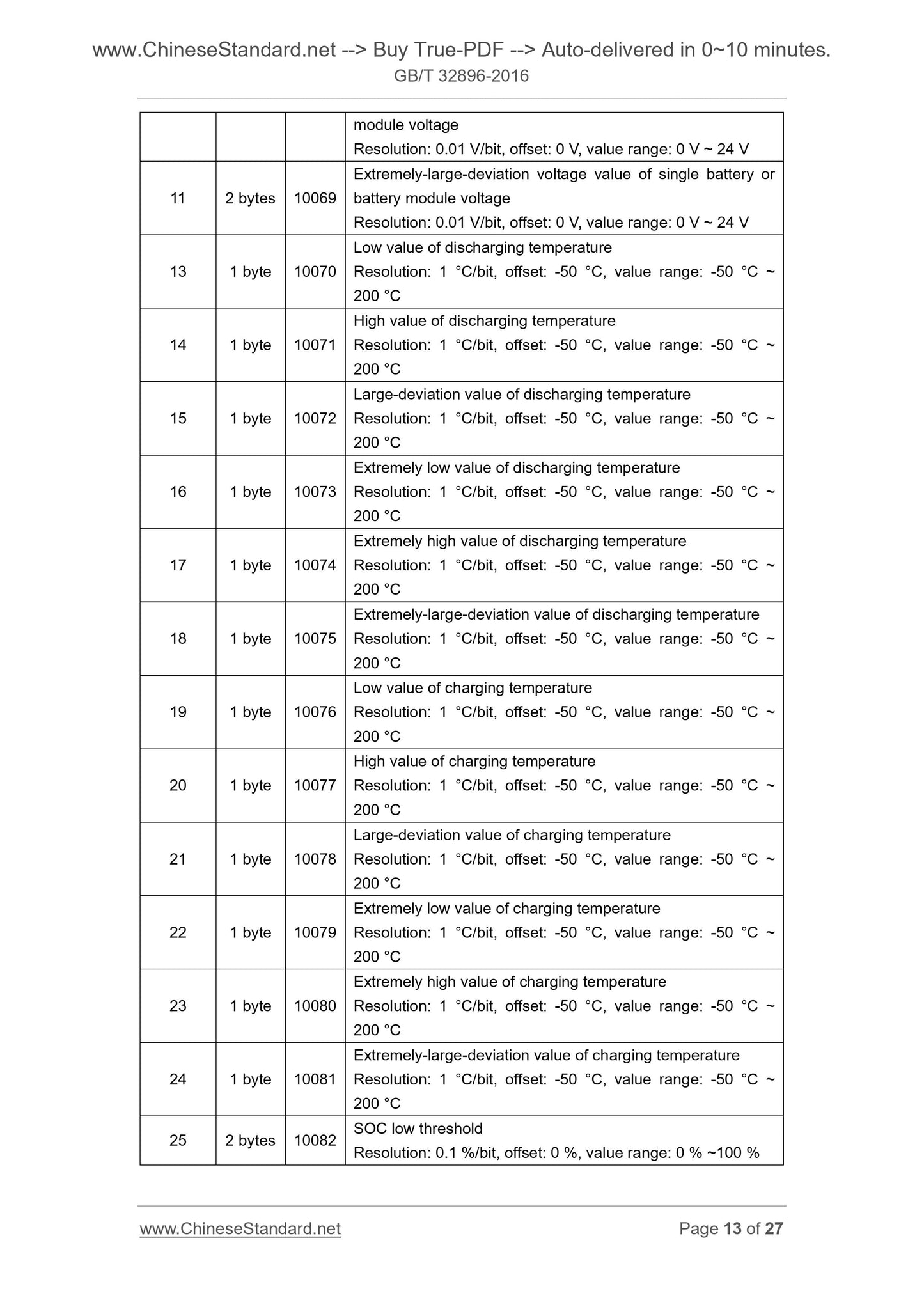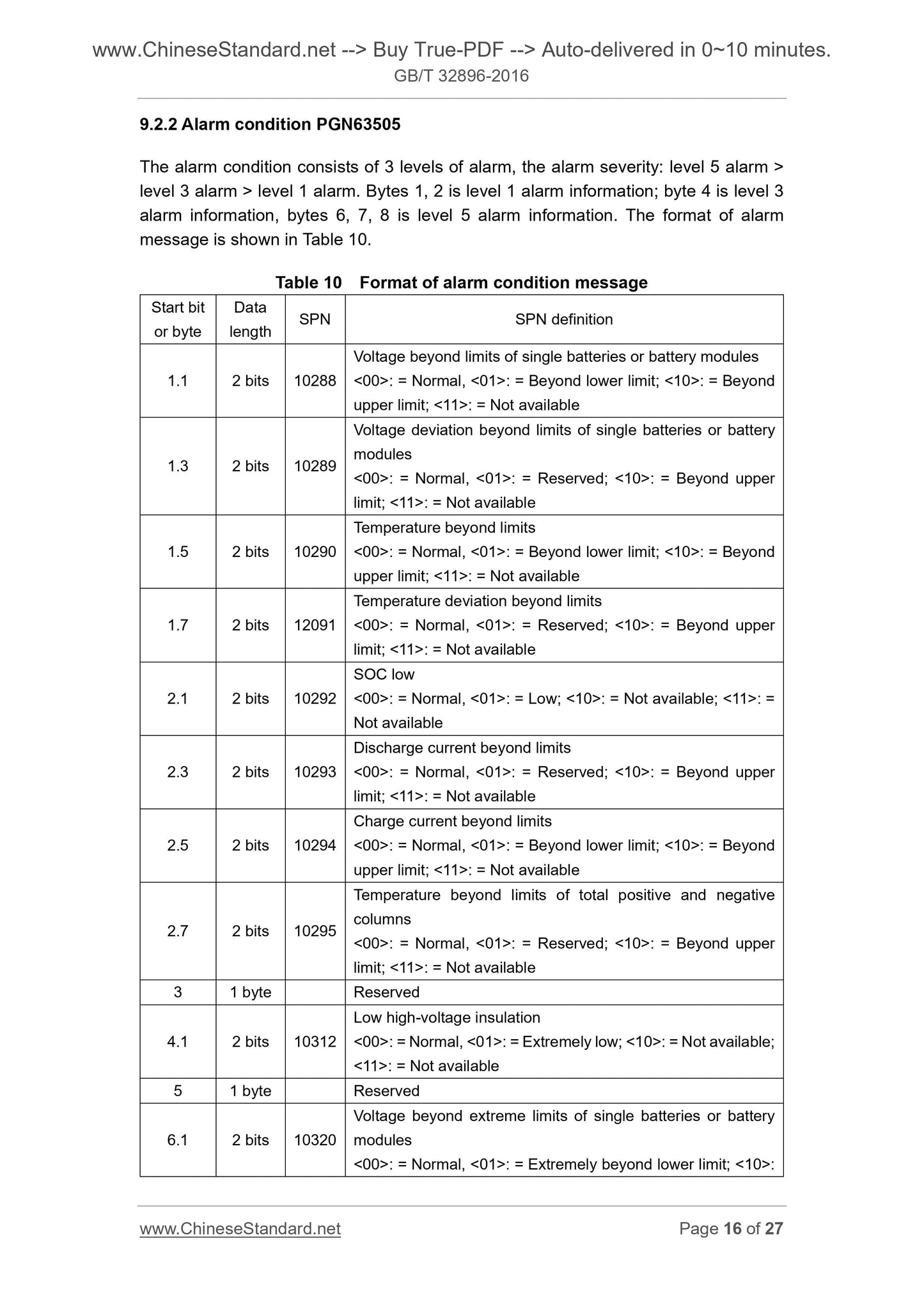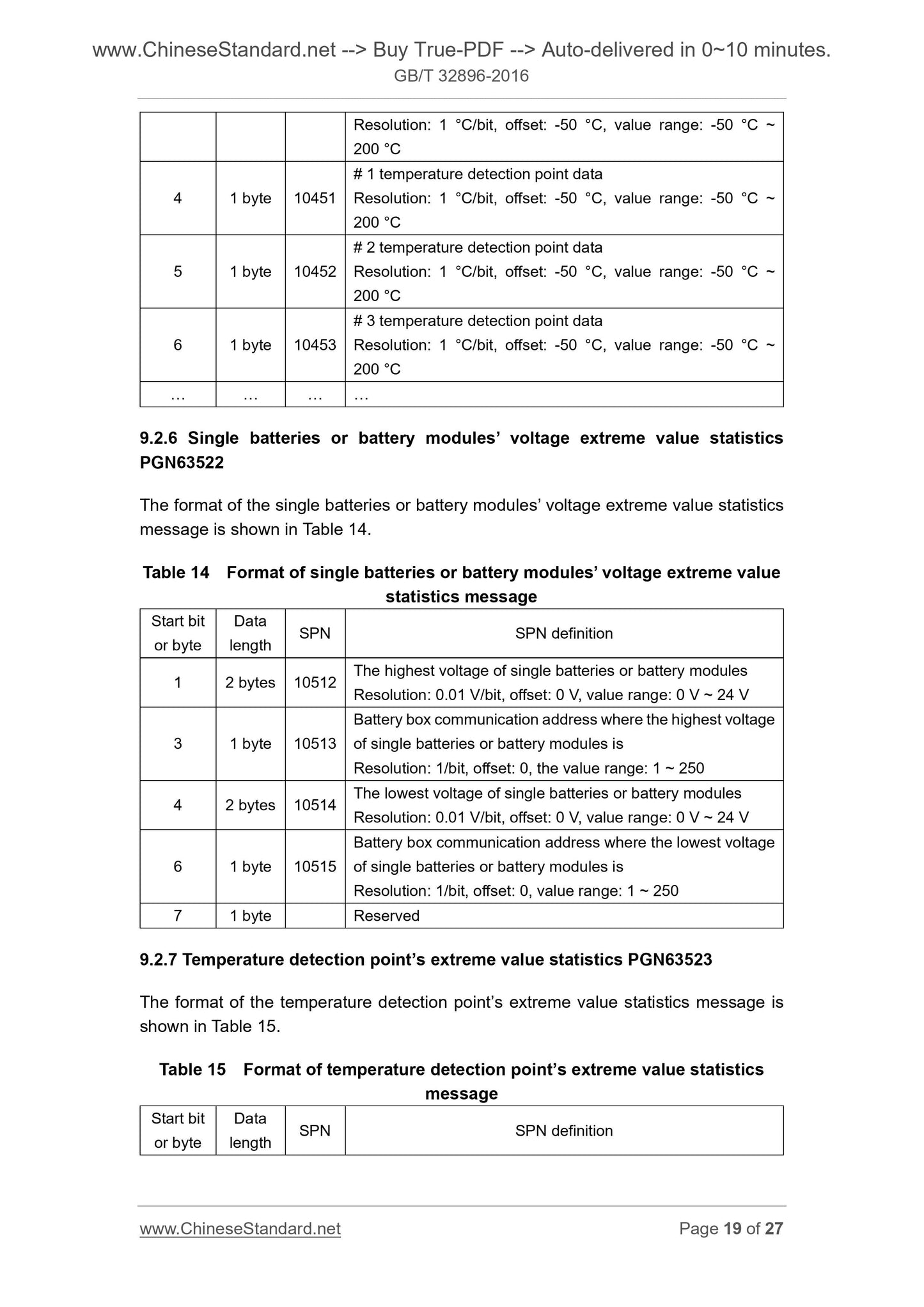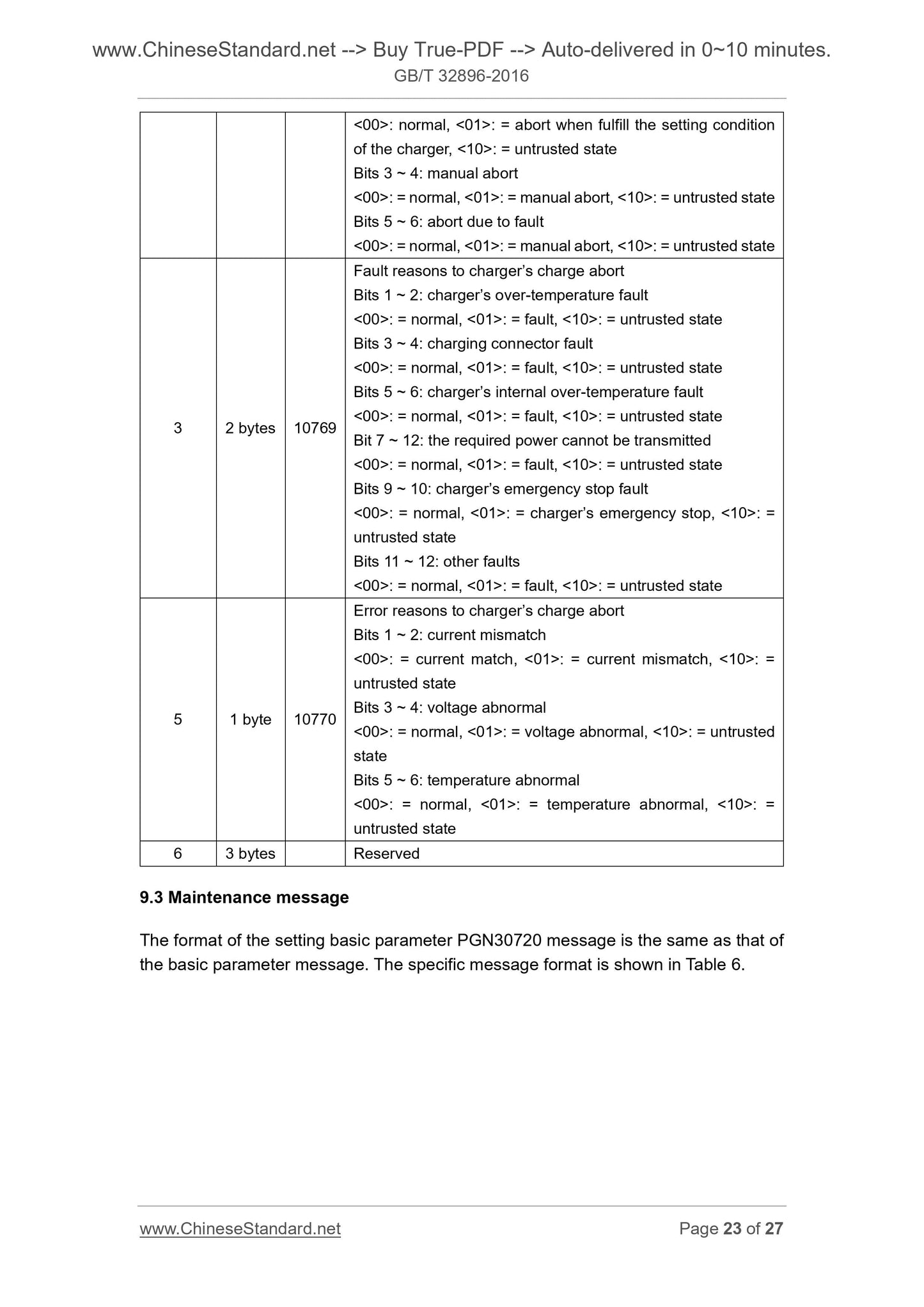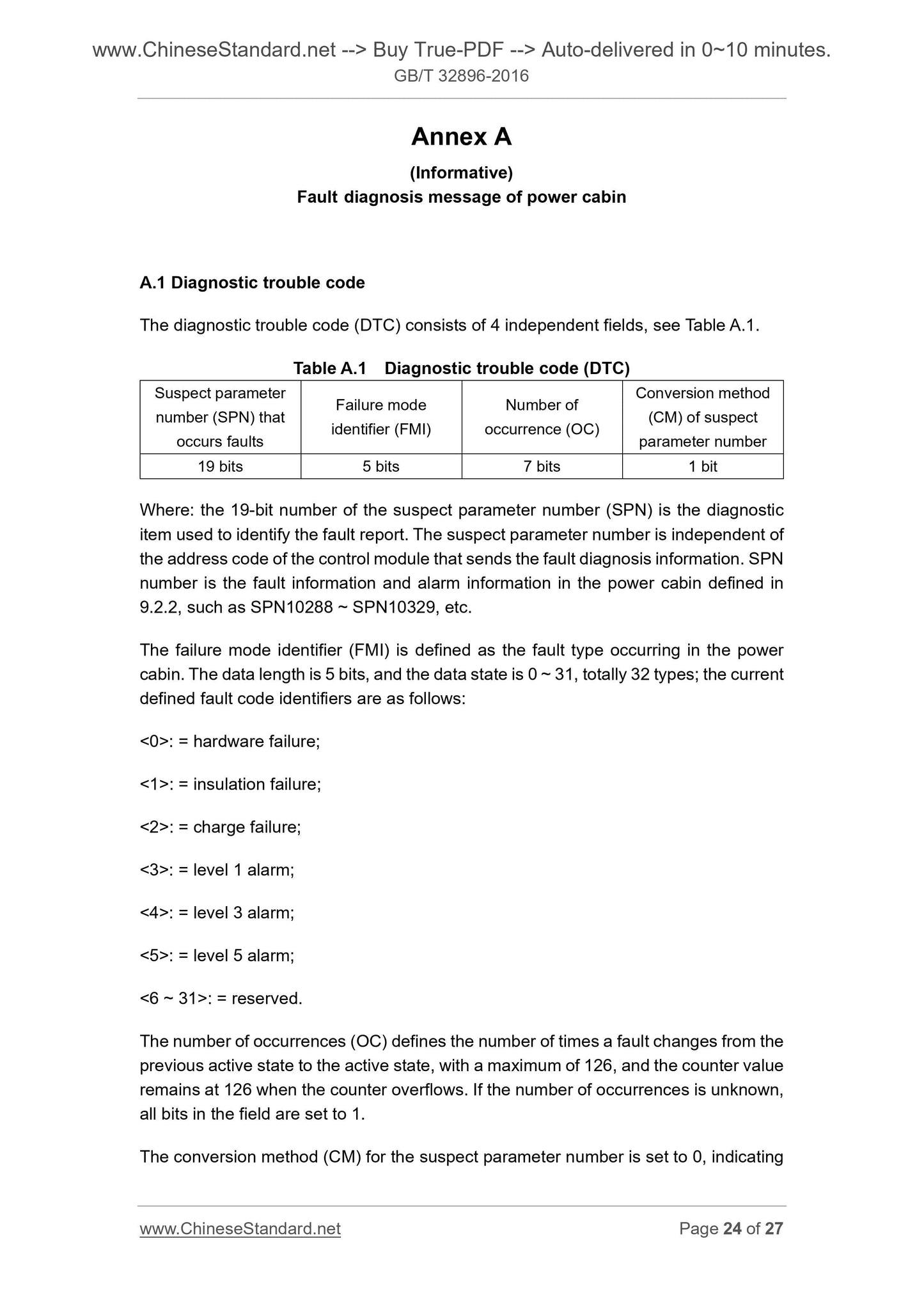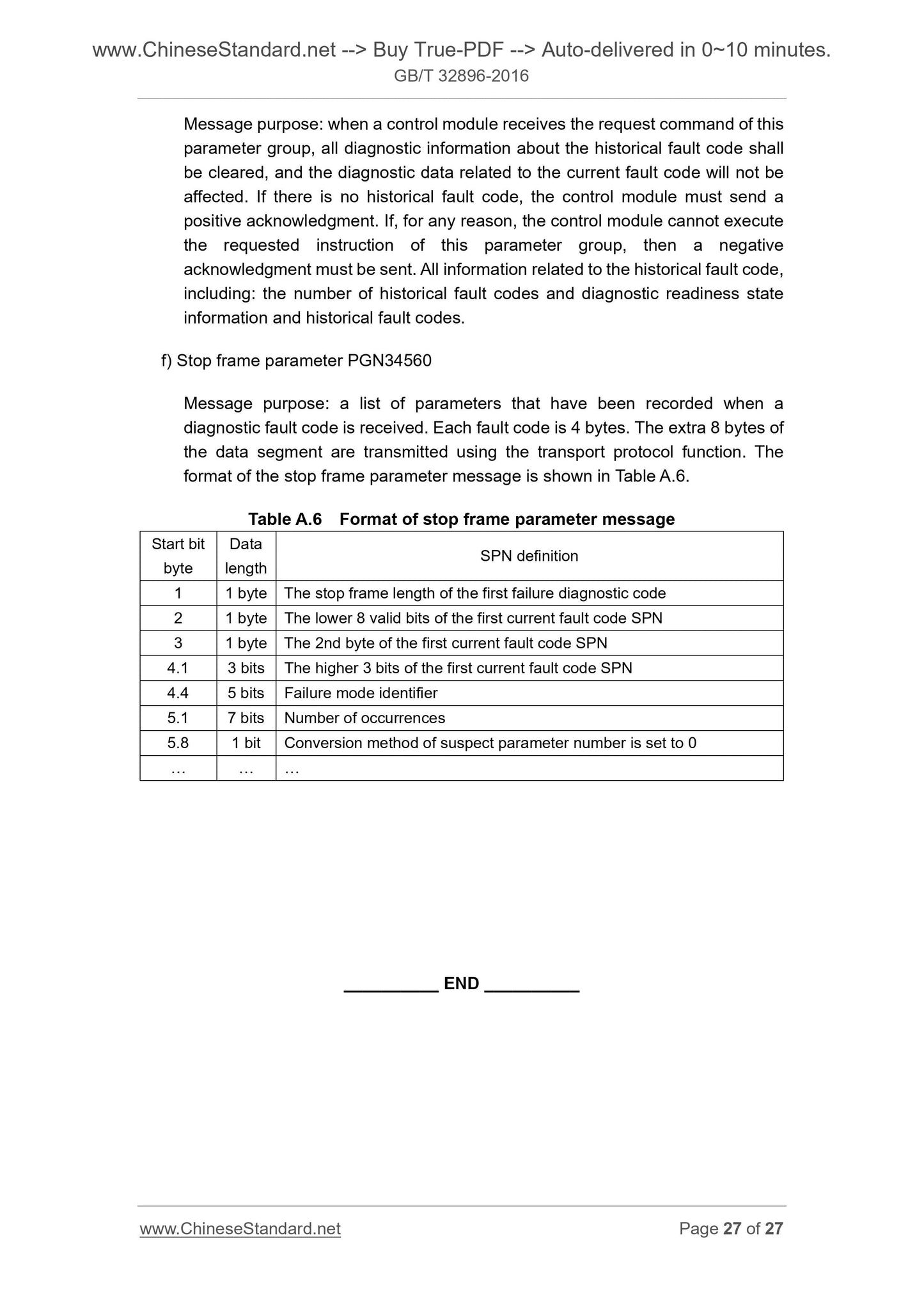1
/
of
12
www.ChineseStandard.us -- Field Test Asia Pte. Ltd.
GB/T 32896-2016 English PDF (GB/T32896-2016)
GB/T 32896-2016 English PDF (GB/T32896-2016)
Regular price
$150.00
Regular price
Sale price
$150.00
Unit price
/
per
Shipping calculated at checkout.
Couldn't load pickup availability
GB/T 32896-2016: Communication protocols for power cabin of electric vehicle
Delivery: 9 seconds. Download (and Email) true-PDF + Invoice.Get Quotation: Click GB/T 32896-2016 (Self-service in 1-minute)
Newer / historical versions: GB/T 32896-2016
Preview True-PDF
Scope
This Standard specifies the definition of the communication physical layer, data linklayer and application layer of power cabin of electric vehicles (hereinafter referred to
as power cabin) basing on the control area network (CAN).
This Standard applies to the communication between the power cabin of electric
vehicle with the battery at quick-change mode and vehicle equipment.
Basic Data
| Standard ID | GB/T 32896-2016 (GB/T32896-2016) |
| Description (Translated English) | Communication protocols for power cabin of electric vehicle |
| Sector / Industry | National Standard (Recommended) |
| Classification of Chinese Standard | K81 |
| Classification of International Standard | 29.200 |
| Word Count Estimation | 22,233 |
| Date of Issue | 2016-08-29 |
| Date of Implementation | 2017-03-01 |
| Regulation (derived from) | National Standard Announcement 2016 No.14 |
| Issuing agency(ies) | General Administration of Quality Supervision, Inspection and Quarantine of the People's Republic of China, Standardization Administration of the People's Republic of China |
Share
